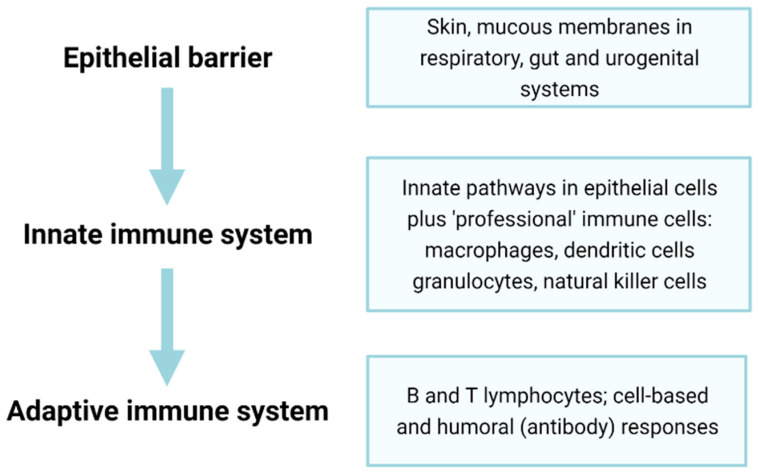Figure 3.
Epithelial barriers and innate and adaptive immunity constitute three major components of the immune system. Epithelial and endothelial barriers form an essential but often overlooked first line of defence in immunity. The senescence of epithelial and endothelial cells forming such barriers can lead to decreased protection (e.g., through diminished mucous secretions or ciliary activity), ‘leakiness’ through the loss of tight junctions and altered properties, including excess inflammation and tissue damage through the SASP. The second pillar of immunity, the innate immune response, is rapid-onset and, though fairly non-specific, can often be sufficient to prevent pathogens from causing disease, though senescence can lead to non-resolving inflammation. The final pillar of the adaptive immune system involves a slower-onset but highly specific response to infection; however, the senescence of these cells greatly reduces overall immune responses and may contribute to inflammageing (see text for further details).

